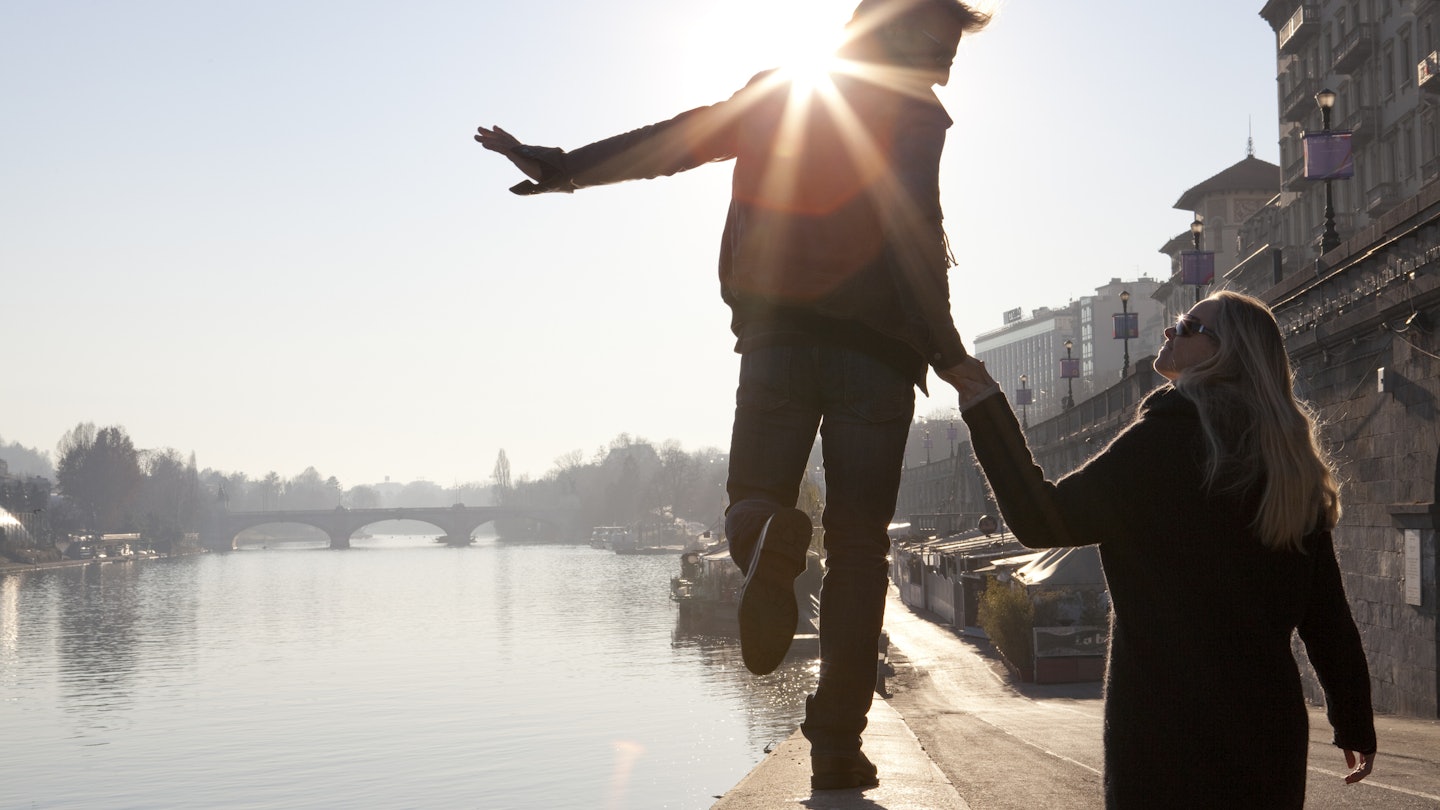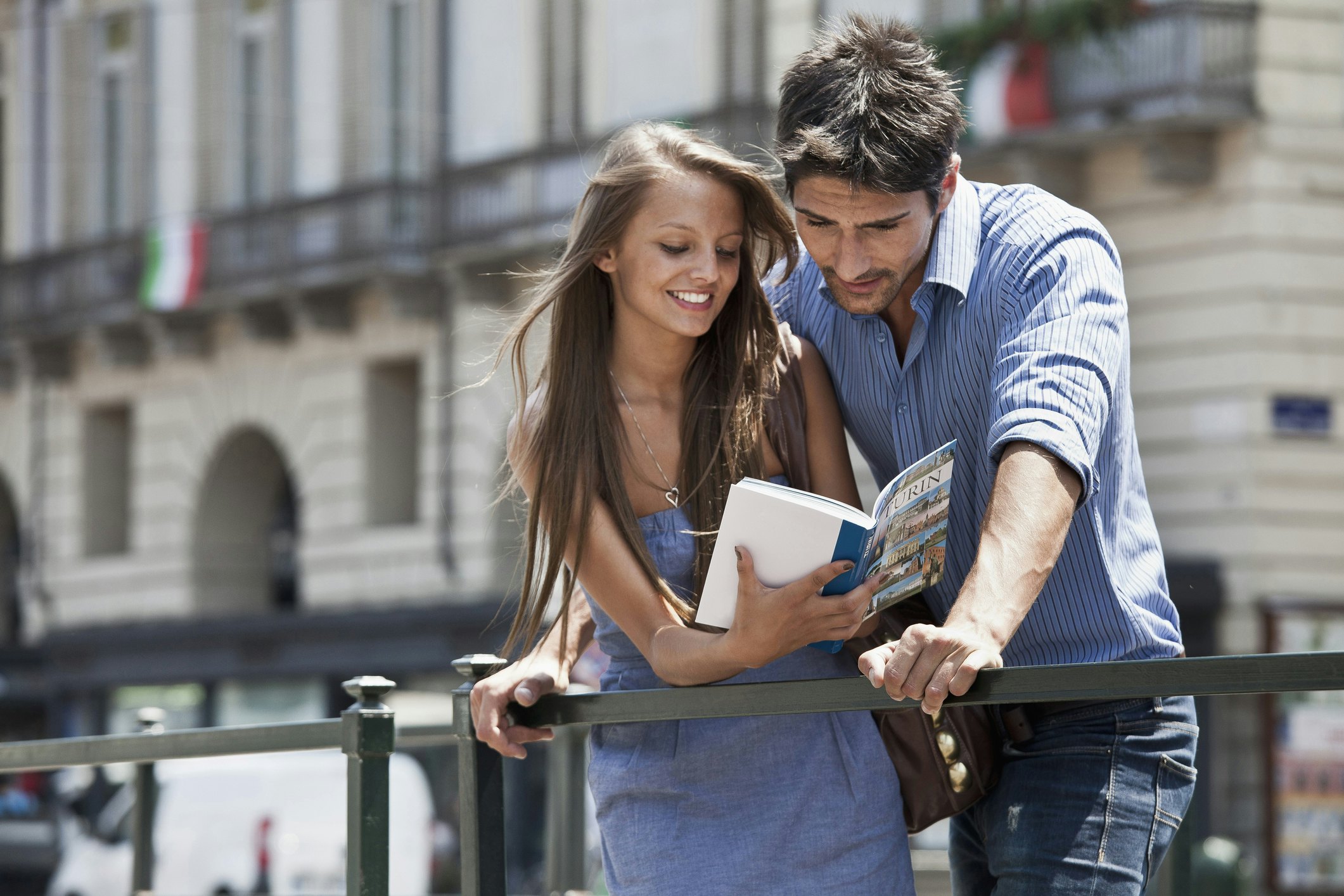
The 30 best countries, cities and regions to visit in 2025

May 9, 2022 • 6 min read

A man walks along a riverside stone wall in Turin during the late afternoon with his partner, a woman, holding his hand as he looks towards her.
Set in the shadow of the Alps in the northwestern region of Piedmont, Turin (Torino) is ideal for an alternative city break. It has a fascinating historic center and a long list of monuments, galleries, and world-class museums.
Its historic cafes serve Italy’s most lavish aperitifs and its nightlife is varied and energetic. Learn where to go and you’ll find there’s always something going on in Italy’s fourth-largest city. Here’s everything you need to know before you visit Turin.
Turin has many claims to fame. For centuries it was the seat of the royal Savoy family and from 1861 to 1865 it was Italy’s first capital. It’s home to the Turin shroud (a linen cloth purported to be the burial shroud of Jesus Christ is housed at Cattedrale di San Giovanni Battista but rarely on display; learn all about it at Museo della Sindone) and the birthplace of many iconic Italian brands, including Fiat cars, Lavazza coffee, and Juventus football club. Nowadays, it’s best known for its princely baroque architecture, stately art-nouveau cafes, sumptuous aperitifs, and decadent food and wine.
Two to three days is enough to cover the key sights, including the Egyptian treasures of Museo Egizio, the sumptuous 17th-century palace Palazzo Reale, the city's iconic landmark Mole Antonelliana, and the collection of 200-or-so cars at Museo Nazionale dell’Automobile. It will also give you time to explore the historic center and enjoy an aperitif or two.
With a couple more days you could strike out further afield, possibly out to see artworks by Modigliani, Manet, and Matisse at Pinacoteca Giovanni e Marella Agnelli, or the vast assemblage of contemporary art at Castello di Rivoli. You could even head to Reggia di Venaria, some 14km northwest of Turin, one of the world's largest royal palaces.

You’ll get by fine with English. Sure, efforts to speak Italian will be appreciated and it’s always good to have a few phrases up your sleeve. But it’s not essential. You’ll have no problems communicating at hotels, cafes, restaurants, and visitor sights, particularly in the center where you’ll likely spend most of your time. Greeting those you meet with an enthusiastic "buongiorno" (or "buonasera" in the evening) will be much appreciated, as will an "arrivederci" as you bid them farewell. "Grazie" is usable in both formal and informal settings to express gratitude.
To be in the heart of the action, go for the historic center where you’ll have pretty much everything on your doorstep. For a more youthful, multi-cultural vibe, try the party-loving San Salvario district to the southeast of the center, or hip Vanchiglia and Aurora to the north. Families after a more peaceful atmosphere could try Crocetta, an elegant and well-connected residential district, or leafy Borgo Po over the river.

Reckon on €100-200 (US$105-210) for a daily budget. This would cover staying in a mid-range hotel or B&B, eating out (€25-30 (US$26-32) for a restaurant meal), and taking in the main sights (museum entry ranges from around €5-15 (US$5-16)).
To keep costs down, many restaurants and trattorias offer fixed-price lunch menus. Similarly, you can save by dining on an apericena (a meal-sized aperitivo buffet) rather than having a formal restaurant meal.
For sightseeing, the Torino + Piemonte Card provides free and discounted admission to many sights as well as savings on city transport.
You’ll need heavy coats, hats, and scarves for winter (December through February) when it can get bitterly cold, sometimes even snowy. Rain is a risk in spring and autumn, so make sure to bring an umbrella and light rain jacket. Summer (June through August) means hot weather so come prepared with light, loose-fitting clothes. Comfortable, worn-in walking shoes are a must whatever the season. Locals also like to dress smart casual when dining out.

You’ll need to plan ahead for some sights. It’s now obligatory to pre-purchase tickets for the Museo Egizio on the museum’s website. This means picking a date and choosing an entry time. Similarly, the Reggia di Venaria Reale requires pre-booking. You’d also do well to book tickets for the panoramic lift at the Museo Nazionale del Cinema, especially if you’re planning to visit on a weekend.
Turin is a top city to catch a soccer game. Local allegiances are split between the city’s two teams: Juventus, aka la Vecchia Signora (the Old Lady), an aristocrat of the European game and serial winner of Italy’s Serie A; and Torino, a scrappy mid-table team known locally as il Toro (the Bull). Check the clubs’ websites for ticketing information and details of the football season, which runs from late August to May.
You can easily explore Turin’s center on foot. For more outlying districts, you’ll find no shortage of buses and trams. Turin’s public transport system is a breeze to use once you’ve got the hang of it. First up, always buy your ticket before you board a bus or tram. Do this at an authorized newsstand or bar, at an automatic vending machine, or through the To Move app. Once onboard, you should validate your ticket, either by inserting it into the validating machine or holding it up to the contactless reader.
Nowhere does aperitivo better than Turin. Vermouth was invented here in 1786 and today an early evening aperitif is still a cherished local rite. Head to a cafe between 6pm and 8pm, order a drink – perhaps a Campari, Aperol, or Vermouth-based cocktail – and dive into the complimentary food buffet.
Recent years have also given rise to the apericena, a beefed-up aperitif whose lavish food offering effectively substitutes dinner (cena). Reckon on around €7-15 (US$7-16) for an apericena in a city center cafe. Bars we like include Pastis, an evergreen favorite on Piazza Emanuele Filiberto, and Affini San Salvario a stalwart in the hip San Salvario district.

For the best free views in town, head up to Monte dei Cappuccini above the Chiesa della Gran Madre di Dio. After a 10-minute uphill hike, you’ll be rewarded with fabulous views over the city’s rooftops to the Alps on the horizon. For maximum romance, head up at sunset.
In a word, yes. However, it still pays to be aware of pickpockets in crowded areas. Use your common sense and watch your valuables. At night, be particularly vigilant in the area around Stazione Porta Nuova and Porta Palazzo market.
You might also like:
The 13 best things to do in Turin when you’re not at Eurovision
15 free things to do in Turin
Piedmont’s top dishes and where to try them
Plan with a local
